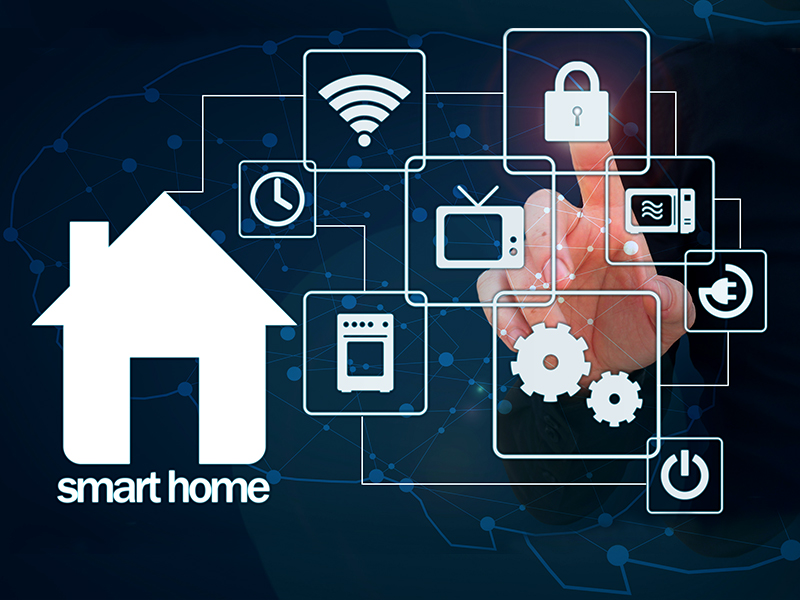Automation, actuators, app, Bluetooth, controller, digital assistants, geofence, hub, IFTTT, IP, modules, network, protocol, sensors, smart devices, Wi-Fi, Zigbee, and Z-Wave are some of the smart home terminology related with the topic’s scope.
These terminologies are briefly defined here. The communication of devices controlled by a central hub and accessible remotely via a smart phone is referred to as automation. Automation creates scenarios and adheres to regular habits such as morning and night rituals. Actuators are designed to do activities in response to data provided by sensors, either manually or automatically. In the smart home, an app is a piece of software that organises and controls smart applications. All of the smart home’s functionalities are accessed through an app.
Bluetooth is a technology that allows smart products to interact with each other without the use of Wi-Fi or the internet.
A controller is a physical device that activates a user-initiated command. The voice activation system’s digital assistant is a type of persona that allows the user to communicate with the virtual assistant via the voice activator.
Among these are Apple Siri, Google Assistant, and Amazon Alexa.
Geofence is a virtual fence that employs GPS or RFID technology to monitor people’s locations and send early commands to smart appliances if necessary. One of them is commanding the garage door to open.
The hub is a central piece of hardware that keeps data about the smart home and can be accessed via the smart app.
IFTTT is a free service that allows you to conduct tasks linked to smart applications.
IP (Internet Protocol) addresses allow smart devices to communicate over a network.
Modules is similar to the phrase actuator. The tasks that are completed as a result of the sensor’s information.
A network is a channel that allows multiple devices to communicate with one another. Protocol is a type of communication or a language that is used to send and receive data. ZigBee, Z-Wave, Bluetooth, and WI-FI are the most common smart home protocols.
Sensors are physical devices that are used to track movement, temperature, and lighting.
Sensors create a link between the physical world and smart capabilities, allowing for the detection of danger and a better understanding of the home environment. Any application having a link capable of interconnecting via protocols such as WI-FI, Bluetooth, and others is referred to as a smart device.
A smart home is a home with an automated system and smart equipment. It has smart heating, lighting, sensors, and security to provide the homeowner with comfort and convenience.
Wi-Fi (Wireless Fidelity) is a wireless network communication system that employs radio waves to allow computers and other devices to connect to the internet at high speeds.

There are benefits and drawbacks to having a smart house.
When it comes to the benefits, convenience is a huge plus because it allows you to manage all of your household appliances from one place. The success of home management is due to the fact that technology serves as an interface to keep the house and its gadgets connected. The smart app’s numerous functions, features, and customization options will control and monitor the entire house.
Another advantage of smart homes is their flexibility in accommodating new appliances and devices, allowing consumers to quickly adapt to the latest lifestyle technologies. It also ensures the security of the home by issuing security alerts based on real-time activity monitored by surveillance cameras and motion detectors. House operations can be controlled remotely in a smart home, allowing the owner to operate them from afar. The use of a programmable smart thermostat, motorised blinds, and other scheduled smart equipment can help a home save money by conserving energy. Meanwhile, upgrading a house to a smart home boosts its property value. If you are looking to purchase any of the IoT devices from Xtechbuy.
In a smart house, not only the benefits but also the drawbacks are there. A person who is unfamiliar with technology will find it challenging to manage the concept of a smart home system. Due to the enormous expenditures required, only the wealthy can afford to update their homes to smart homes. Because the home automation system is connected to the internet, it is more vulnerable to attacks. In this case, the hacker has the ability to infiltrate the entire house, resulting in property losses or even death.
Another disadvantage is the subscription fee that is charged for the smart app. Because the smart home is so reliant on the internet, it will stop working if the internet goes down. Also, as technology evolves, older smart devices and operating systems will need to be replaced with newer, more standard versions.
The owner will incur an additional cost as a result of this. As a result, it is critical for the user to weigh both the benefits and drawbacks of smart home technology in terms of cost, privacy, and security before putting it in place.


